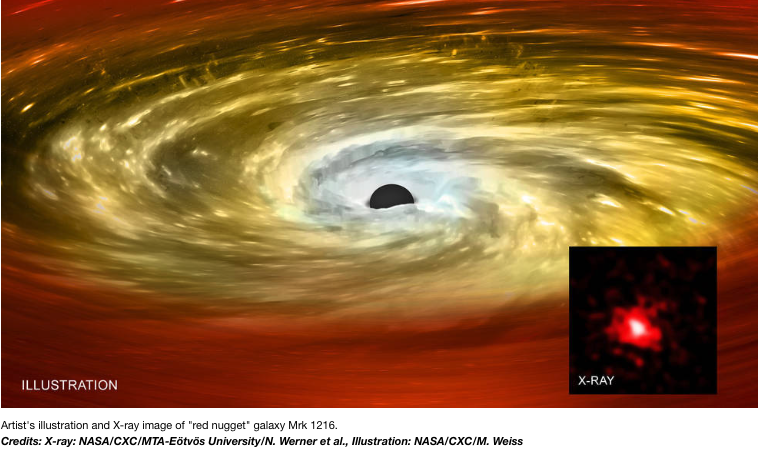
Red nuggets is a population of small, but massive galaxies. They were first discovered about a decade ago by the Hubble Space Telescope. They lie at very large distances from Earth, when the universe was only 3-4 billion years old. They are probably the ancestors of the giant ellipticals we observe in the local universe. Most of these systems have gone through mergers over the billions of years of their existence. However, some of them have remained isolated and this makes them extremely interesting since they allow us to study how galaxies and the supermassive black holes (SMBHs) at their centres evolve over billions of years of isolation.
Now, astronomers used NASA’s Chandra space X-ray observatory to observe two such systems, named MRK 1216 and PGC 032673. These two galaxies are located only about 300 million light years from us, compared to billion light years of the first detected red nuggets. The observations revealed an X-ray emitting hot gas which indicates that the central SMBH is both systems is active. Further analysis revealed the existence of high speed jets emitted in the vicinity of the black holes. These jets heat up the surrounding material, preventing the hot interstellar gas from cooling and eventually forming stars. Moreover, astrophysicists measured the black holes in both systems and found that the are extremely massive with masses about five billion times that of the Sun.
Therefore, scientists concluded that these isolated systems have active SMBHs that not only quench the star formation of their host galaxies but consume the galactic material to feed themselves!
Publication: Werner et al. 2018
Source: Chandra
